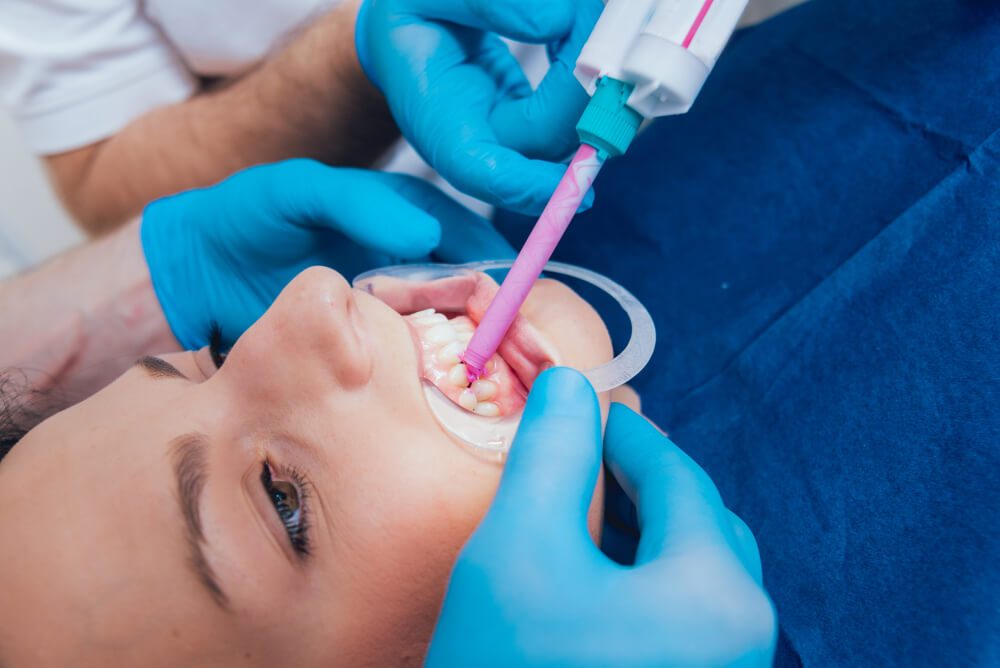Are Dental Fillings Painful? What to Expect in the Chair

Dental fillings are one of the most common procedures you’ll encounter at the dentist—and one of the most misunderstood. The moment your dentist tells you that you need a filling, it’s normal to feel a bit uneasy.
Your thoughts instantly jump to pain, needles, or the sound of the drill. But here’s the truth: getting dental fillings isn’t as scary or painful as many people imagine.
In fact, for most patients, the experience is far more manageable—and often completely pain-free.
Understanding Why You Need a Filling
You typically need a dental filling when your tooth has been damaged by decay, wear, or even a minor fracture. Fillings restore the shape and function of your tooth while stopping the decay from spreading further.
Without treatment, the cavity can deepen, potentially leading to tooth loss, nerve injury, or infection.
So, while the idea of getting a filling might cause a bit of anxiety, it’s a positive step—it means you’re addressing the problem early before it becomes something more serious and painful.
What to Expect at Your Appointment
Walking into the dental chair, especially if it’s been a while since your last visit, can make your heart race a little. That’s okay.
Dentists know this and will usually take the time to explain the process to help you feel more at ease.
Here’s how a typical dental filling procedure unfolds:
1. Local Anaesthetic is Applied
Your dentist will use a local anaesthetic to soothe the area surrounding the damaged tooth before proceeding. You might feel a slight pinch when the needle goes in, but it only lasts a second or two.
The numbing effect kicks in quickly, and that’s what ensures you don’t feel pain during the actual procedure.
2. Removing the Decay
Once the area is numb, your dentist uses a drill or laser to remove the decayed part of the tooth gently. You might hear the sound of the equipment or feel vibrations, but there shouldn’t be pain.
Some people describe it as more “strange” than uncomfortable. If at any point you do feel something, your dentist can stop and apply more anaesthetic.
3. Cleaning and Preparing the Tooth
After the decay is removed, the space is cleaned to remove bacteria or debris. This ensures a strong foundation for the filling.
4. Filling the Tooth
The space is then filled using a dental material like composite resin, amalgam, or another option. Your dentist shapes the filling to match the natural contours of your tooth, then hardens it with a special light.
5. Polishing and Bite Check
Finally, your dentist will check that your bite feels normal and make minor adjustments as needed. Once that’s done, you’re good to go.
Does It Hurt? Let’s Talk Honestly
Thanks to modern dental technology and anaesthetic, the majority of patients don’t feel pain during a filling. That said, everyone experiences discomfort differently.
If you’re nervous or have a low pain threshold, it’s completely okay to let your dentist know beforehand. Many practices are well-equipped to offer calming techniques, such as distraction methods or even sedation if needed.
After the anaesthetic wears off, you may feel a slight sensitivity in the filled tooth, especially to cold or pressure. This is temporary and usually fades within a few days.
If needed, over-the-counter pain relievers can be helpful, but many people don’t find it necessary.
The Emotional Side of Dental Work
Emotions can also create anxiety in addition to bodily symptoms. Maybe you feel embarrassed about needing a filling or guilty for not going to the dentist sooner.
Please know you’re not alone. Fillings are a routine part of maintaining oral health, and dentists see them every single day. Their focus is on helping you, not judging you.
Remember, choosing to fix the problem now means avoiding more complex treatment later. That’s something to feel good about.

How to Make the Experience Easier
If you’re feeling uneasy about an upcoming appointment, there are a few things you can do to prepare:
Ask Questions
Understanding what’s happening can ease a lot of fear. Don’t hesitate to ask your Seven Hills dentist to walk you through the steps beforehand.
Schedule Smart
Choose an appointment time that allows you to be relaxed—maybe in the morning before the day gets hectic.
Bring Headphones
Listening to music or a calming podcast during the procedure can help distract you from the sounds of the equipment.
Communicate
Don’t be afraid to raise your hand if you need a break or if something doesn’t feel right. You’re in control.
Looking Ahead: Caring for Your Filling
Once your filling is in place, it becomes part of your regular dental routine. Keep brushing and flossing as usual, and try to avoid very hard or sticky foods right after the procedure, just to be safe.
If your bite feels “off” or the sensitivity doesn’t improve within a week, it’s a good idea to follow up with your dentist.
Most fillings last for many years, especially with good oral hygiene and regular dental check-ups. Your Seven Hills dentist will keep an eye on it during future visits and let you know if any repairs are needed.
Dental Fillings in Seven Hills
If you’ve been putting off that dental appointment because you’re worried about the pain or discomfort, it’s time to reconsider. Getting a filling is more straightforward and comfortable than you may think—and delaying treatment can make things more complicated in the long run.
You deserve a healthy, pain-free smile, and addressing cavities early is one of the best ways to protect it. Don’t let fear stand between you and your oral health.
Book your appointment at My Local Dentists today with a gentle and understanding team that prioritises your comfort. If you’re in Seven Hills and need supportive care for dental fillings, we’re here for you.
Call us at (02) 8605 1696 or visit us at Shop 55, (Ground Floor) Seven Hills Plaza, 224 Prospect Hwy, in Seven Hills.
